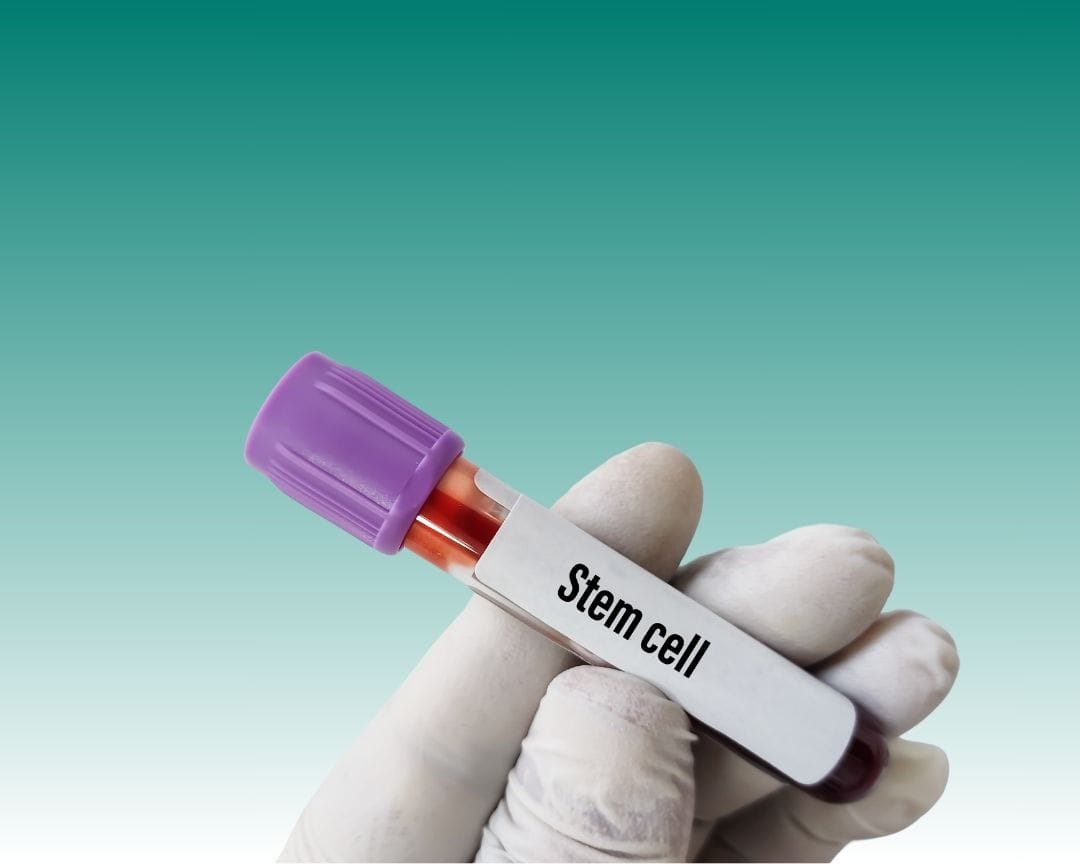What is Stem Cell Treatment For Autism
Stem cells are a versatile agent of transformation, which are revolutionizing the treatment options. They have the ability to transform into a variety of cell types that are specialized and thus offer promise in treating various diseases. In the middle of this amazing cellular potential and the complex nature of neurodevelopmental disorders is the mystery that is autism spectrum disorders (ASD).
ASD is characterized by its complex mix of social communication issues with repetitive behaviors and limited interests is a problem that affects a large number of people across the world. Although the cause of ASD is multifaceted, recent research has sparked curiosity about the potential therapeutic benefits of stem cells to alleviate the signs and difficulties related to this condition.
On this page, we delves into stem cell-related autism by shedding some light on the exciting possibilities and the meticulous aspects that go along with this type of medical research.
What Are Stem Cells?
The regenerative process is at the core of medical treatment, stem cells function as the creators of regeneration, with the ability to regenerate and transform. Stem cells, distinguished by their capacity to differentiate into a variety of different types of cells and play an essential role in the body’s continual development, repair, and maintenance. Their unique ability grants the possibility of replacing damaged or malfunctioning cells, and offer hope for regenerative tissue in many conditions.
Stem cells can be found in many varieties with different capacities and functions. The embryonic stem cells, derived from embryos that are in their early stages, possess unmatched pluripotency, which allows them to transform into virtually any type of cell within the body. Adult stem cells that reside in specific organs and tissues are essential for maintaining normal function of tissue and repair throughout the course of. The discovery of the induced pluripotent stem cell (iPSCs) was also an important leap forward. Through reprogramming adult cells to display embryonic characteristics IPSCs could be the basis for personalized regenerative therapies eliminating ethical issues that are associated with embryonic source.
Understanding Autism Spectrum Disorder (ASD)
Autism Spectrum Disorder (ASD) is a multifaceted array of neurodevelopmental differences that influence an individual’s perception social, cognitive, and experiences. The primary characteristics are related to the spectrum of behavior, communication, and social interaction, and are essential to the definition. People with ASD might be faced with verbal or nonverbal communication difficulties, which range from difficulty initiating conversations, to difficultly interpreting the meaning of gestures or expressions. Repetitive behavior and limited areas of interest are also common characteristics which are typically manifested in repetitive movements or focused attention on a particular topic.
The complex web of the ASD’s origins stretches into a vast landscape of environmental and genetic factors. Although the exact cause remains undetermined, scientists recognize the connection between environmental and genetic factors in crucial developmental phases. Genetic studies have revealed a variety of risk genes which contribute to ASD susceptibility. In addition, prenatal factors like maternal infections, immune responses and environmental exposures are being scrutinized to determine their contribution.
Get past the hurdles with Soraca Med cutting-edge stem cell-related autism treatment in Istanbul. We have a team of compassionate professionals to help you discover new possibilities.
Stem Cell Therapy: How Does It Relate To Autism?
The intriguing power that lies in stem cells in autism treatment is in their diverse capability to deal with the biological processes. Stem cells are capable of influencing immune responses as well as reducing inflammation, which have been linked to the developmental processes that are associated with autism. In addition, their ability to assist in neural repair is fascinating because the complex neural networks that are disrupted in ASD could find ways to repair themselves using the rejuvenating cells. Initial studies and emerging theories have highlighted the possibility of using stem cells to treat ASD. Certain studies suggest that stem cells can release anti-inflammatory and neuroprotective factors which could help to create a more positive microenvironment for neural growth and connectivity. The idea that stem cells can perform “immunomodulation” through stem cells has generated interest, since an imbalance in the immune system has been observed in people suffering from ASD.
Explore the possibilities stem cell therapy has for those suffering from autism. Soraca Med in Turkey is there to support you each step at a.
Current Research And Findings
Recent studies in research along with clinical research have spurred the research into stem cell-based autism therapy. Studies have contributed to the increasing amount of evidence that sheds more light on the benefits on stem cells on people who suffer from ASD. These studies have shown positive outcomes, and have observed improvement in several aspects of the participants behaviours and symptoms. Certain research studies have shown improved communications skills, a reduction in repetition, and improved social interactions between individuals who are treated.
Although the field is in its development, these findings offer some hope to those looking for novel treatments for ASD. However, it is crucial to keep in mind that research is still ongoing and the complexities that stem cells offer, which includes dosages, administration techniques and the long-term results require further investigation. As scientists continue to discover the possibilities benefits stem cells for autism therapy the results of these studies represent important steps towards gaining an comprehension of the ways this new method can help improve the lives of people on the spectrum of autism.
We SoracaMed , we believe in creating a future of progress for every person. Find out details about the stem cells treatment for autismin Istanbul.
Challenges And Ethical Considerations
Research into stem cells for treatment of autism creates the possibility of a myriad of problems and ethical debates that need an examination. When it comes to vulnerable populations such as those who suffer from autism, ethical issues relating to informed consent, potential risk, and the long-term effects are at the forefront. The importance of rigorous scientific research is not overstated. The robust clinical trials, which are characterized with well-designed procedures and appropriate controls, are essential for determining the efficacy and safety of stem cell treatments. Making sense of these issues with care is a sign of the importance of research-based methods that have the power to alter the field of autism treatment while safeguarding the integrity of research.
The stem cell is what they are? And why are we hearing all the time about stem cells?
Stem cells assist in creating new cells within healthy tissues. They can also aid in the repair of tissues in areas that have been damaged or injured. They form the foundation for the distinct cells that compose every organ of the body. Stem cells differ from other types of cells by several important features They are able to self-renew and can multiply for a prolonged period of time, and in certain circumstances, they could be made to differentiate into special cells with distinct purposes (phenotypes) such as and not only heart the cells of liver bone cells, fat cartilage cells, nerve cells as well as connective tissue cells. The capacity of cells to develop into a variety of other cells is referred to as multipotency. The information scientists gather about stem cell differentiation may serve as the basis for the development of the development of new therapies for many severe injuries and illnesses.
2. What is the difference between adult and embryonic stem cells?
Some organs are home to stem cells, commonly known as adult stem cells. They remain throughout their lives and aid in the maintenance and repair of these organs. There are a few organs that have been proven to have stem cells, but generally adult stem cells possess a limited development potential due to their ability to proliferate is limited and they produce only certain types of cells. Stem cells that are embryonic, on the other hand, contrast, can multiply almost indefinitely, and they can produce to all types of cells within the body, suggesting that they are the most adaptable source of cells used in research and transplantation therapies.
3. How do stem cells originate from?
There are many sources of stem cells that are used in research. The embryonic stem cells are derived from the cell wall of blastocysts. The blastocyst develops when the fertilized egg or zygote, splits and produces two cells. after which it forms four cells, until it is hollow balls of approximately 150 cells. The cell ball is now known as the blastocyst, actually has two kinds of cellsthe trophoblast and the inner mass of cells. The inner mass of cells contains the pluripotent stem cells which are isolated from and cultivated. Stem cells can also be found in differentiated tissues as well as organs throughout the body.
They are often called adult stem cells or cells that are specific to tissue They haven’t been recognized in all tissues and organs, yet in many instances they do exist and play a significant role in the repair and maintenance of tissues that have been damaged or injured due to illness. Adult stem cells are extracted from samples of tissue, and the cells are suspended in liquids and then separated according to cells’ surface markers using fluorescent activated cell sorting (FACS). The umbilical cord of a baby’s newborn also includes blood stem cells. This is usually reconstituted and stored to be used later to benefit research or to help with future treatments the donor may need. Amniotic fluid is a great sources of stem cells which are multipotent, and typically more durable than stem cells that are derived through other methods. In addition, induced pluripotent stem cell (iPS cells) are created from the huge collection of differentiated cells found in our bodies (e.g. muscles, skin, fat, etc.) that are then transformed into an embryonic the stem cells state.
4. What are the induced pluripotent stem (iPS) cells?
Induced pluripotent cells originate from somatic (adult non-germline) cells that are reverted back to an embryonic stem-cell-like state. As embryonic stem cells, iPS cells are capable of differentiation into any type of cell in the body thus they are considered to be pluripotent. The procedure of generating these cells, which is often called “reprogramming,” involves introducing the combination with three or four different genes that are transcription factors, which are injected via retroviruses into the cell.
Modern methods have reduced and replaced the amount of genes required to undergo the transformation. They also employed alternative methods of delivering the genes into cells or to replace genes using chemical components. Cells can be derived from patients suffering from certain illnesses like ALS Parkinson’s, ALS or cardiovascular disease, and then reprogrammed to create iPS cells. Numerous uses can be made from iPS cells after they have differentiated into specialized cells, such as the creation of tests for studying the process of disease and analyzing drug candidates for safety and efficacy, and application to regenerative medical.
5. How can adult stem cells be collected?
Adult stem cells can be often derived from the outer part of the pelvis called the iliac or crest. A needle is inserted into the iliac bone, and the bone marrow will be withdrawn and aspirated out of the needle. Multiple samples could be taken from a single region in this way. The stem cells can later be separated from the other cells of the marrow and further expanded in the lab. It can take anywhere from 7-21 days. If stem cells have been placed within a tissue-specific environment, such as bone, they get activated. When they divide, they produce new stem cells as well as second generation progenitor cells. The progenitor cells which can differentiate into different cells that have similar phenotypes as those of the host tissue




